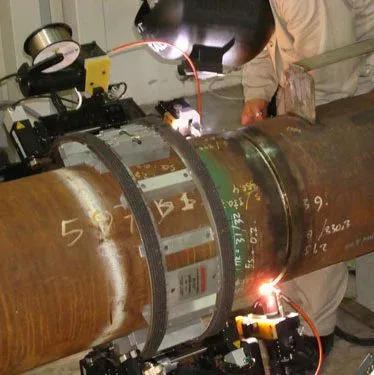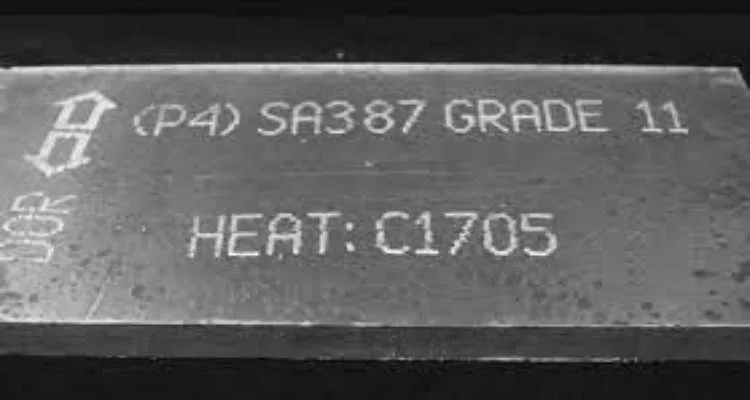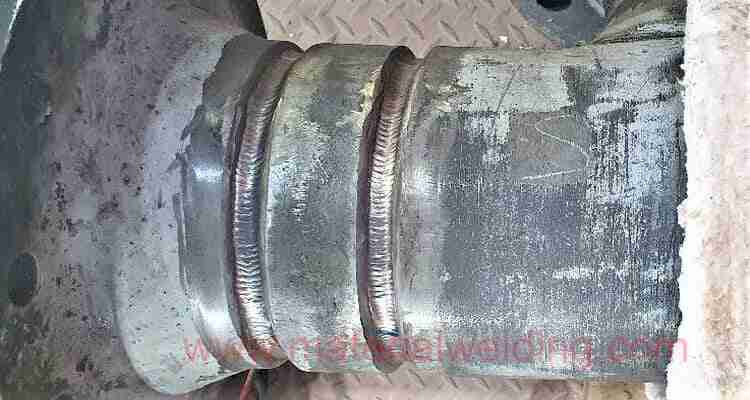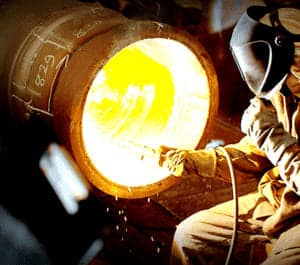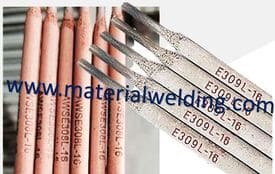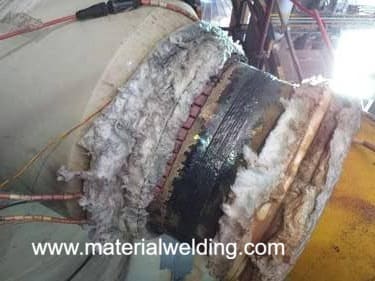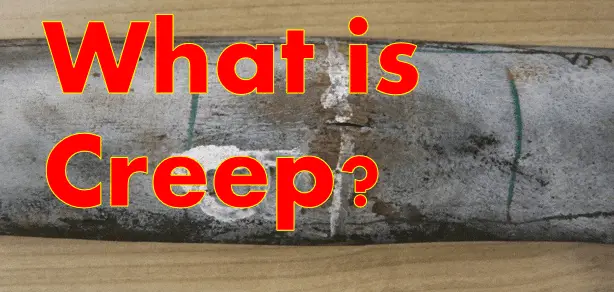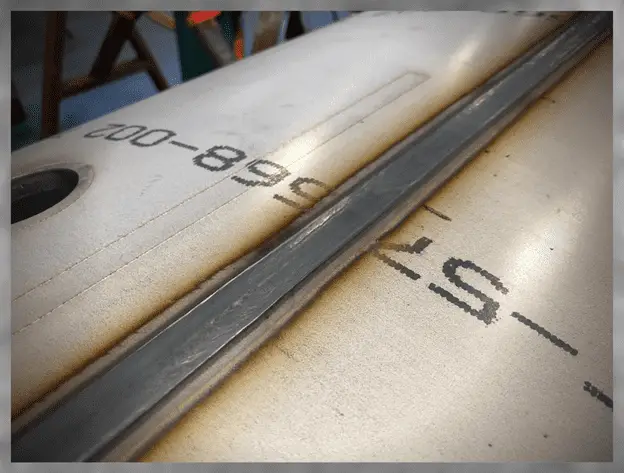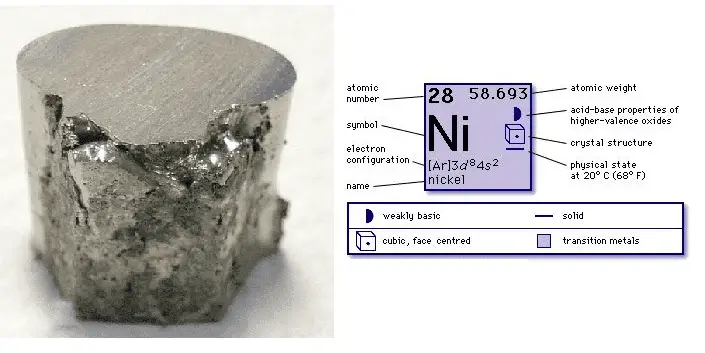What is P91/T91 Steel (9 Chrome Steel)?
P91 or commonly known as 9Cr-1Mo-V is a Creep Strength Enhanced Ferritic (CSEF) alloy steel used for high-temperature application in oil & gas, power plant, and chemical plants.
The P91 material means 9%, 1% Moly & Vanadium, and is commonly known as 9Cr-1Mo-V steel in oil & gas/ power plants.
Being a creep-resistant material, the uses of P91 materials are mainly for elevated temperatures with high-pressure applications. Due to their high strength at high temperatures and creep properties, they are used for steam piping, boilers & reactors.
The corrosion resistance of P91 material is also superior to other low alloyed steel because of high chromium. The material P91 has found uses in power plants, chemical plants, nuclear power plants, and the oil & gas sector.
Material is designated as P91 for pipe, T91 for the tube, F91 for forging, C12 A for casting, etc.
creep strength–enhanced ferritic (CSEF) steel is a type of ferritic steel. The creep strength of CSEF steel is improved by control of microstructure predominately as martensite and bainite.
This microstructure is stabilized during tempering by the controlled precipitation of tamper-resistant carbides, carbo-nitrides, or other stable phases.
Material Specification for P91/T91 Material
ASME P Number & Group No. of P91 material is 15E & Group No. 1.
The material specifications for P91 materials are: ASTM–182 F91, ASTM-213 T91, ASTM-217 C12A, ASTM-234 WP91, ASTM-335 P91, ASTM-336 F91, ASTM-356 12A, ASTM-369 FP91,ASTM-387 91 Cl.2, ASTM-691 91 etc.
Chemical properties of P91/T91
P91 is ferritic steel alloyed with chromium, molybdenum, and Vanadium. Chromium percentage in P91 is 8 to 9.5%, Moly 0.85 to 1.05% and Vanadium is 0.18 to 0.25%.
Detailed chemical compositions for P91 material are given in the below table for reference.
| Element | C | Mn | P | S | Si | Cr | Mo | Others |
|---|---|---|---|---|---|---|---|---|
| Content, % | 0.08-0.12 | 0.30-0.60 | ≤0.020 | ≤0.010 | 0.20-0.50 | 8.00-9.50 | 0.85-1.05 | * |
Mechanical Properties of P91/T91
The tensile strength of P91 material is 85 Ksi or 585 MPa minimum, Yield strength is 60 Ksi or 415 MPa. The maximum hardness for P91 material is 250 HB.
| Standard | Grade | Yield Strength min. MPa[ksi] | Tensile Strength min. MPa[ksi] | Elongation min. % | Hardness Max. HB |
|---|---|---|---|---|---|
| ASTM A213/ A335 | T91/ P91 | 415[60] | 585[85] | 20 | 250 |
How to weld P91/T91 Material (9 Chrome)
When we talk about P91 welding, the main issues are High hardness (resulting due to alloying elements) and weld cracking (associated with microstructure and trace residual elements such as phosphorous, sulfur, copper that can segregate at the grain boundaries during weld solidification).
Related Reading: P9 Steel Welding Guide.
How do you Weld 9 Chrome Pipe?
P91 primarily microstructure in martensite and bainite which is already one favorable structure for high hardness and cracking).
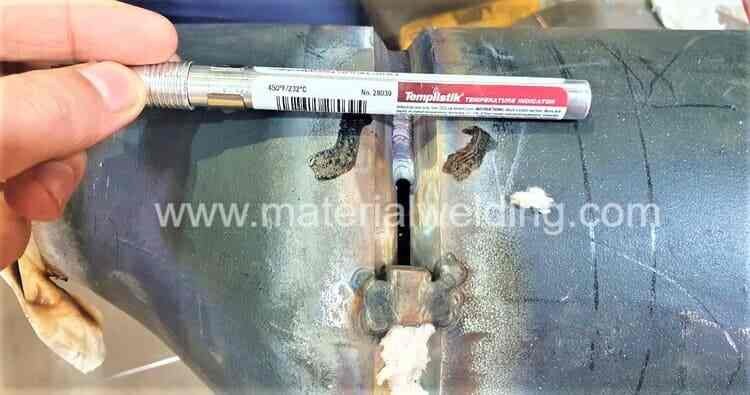
Hence, it is very essential and utmost important task to apply sufficient and effective preheating, post-heating for the welding. The stick (SMAW) welding electrodes must be properly baked and stored in a portable holding oven.
The welding wires shall be free from moisture and any contamination. These are small things but highly effective to ensure the weld is free from cracking.
Preheating is advised to be electrical coil preheating instead of torch flame heating as the coil gives uniform temperature during use.
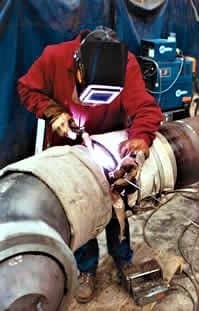
Selection of Welding Consumables for P91/T91 welding:
The welding consumables for P91 shall be from a reputed electrode manufacturer. This ensures the electrode is made with the right chemistry to deliver the required mechanical properties. Verify the electrode before use with the test certificate for matching lot number.
Another factor as explained earlier is the delayed cracking or hydrogen cracking due to favorable conditions with P91 material. So, it is good to choose low hydrogen electrodes only if welding is to be carried out using Stick (SMAW) welding.
AS required by AWS A5.5 or electrode specification, the test certificate or MTC for all Cr-Mo electrode/ wires shall have an X-factor designation for them.
This X-factor measures a weld deposit resistance to temper embrittlement. The number is calculated from the amounts of four key alloying metals in steel which are- phosphorous (P), antimony (Sb), tin (Sn), and arsenic (As), which combined have the highest effect on a weld deposit susceptibility to temper embrittlement. Where,
X-Factor= (10P + 5Sb + 4Sn + As)/100.
So, check the value of X-factor for P91 welding consumable before use as well check and verify it for other Cr-Mo welding wires/ electrodes. For P91, an X-Factor from 15 to 19 is good for welding purposes.
P91 Pipe Welding Procedure
The welding procedure for P91/T91 given here includes a selection of welding electrodes & filler wire, welding process, preheating & interpass temperature, PWHT requirements, and other welding recommendations related to successful P91 material.
A summary of recommended Stick (SMAW) welding, TIG welding, MAG Welding & SAW welding electrode & wire are given below.
Read more: P91 Material Welding Rod
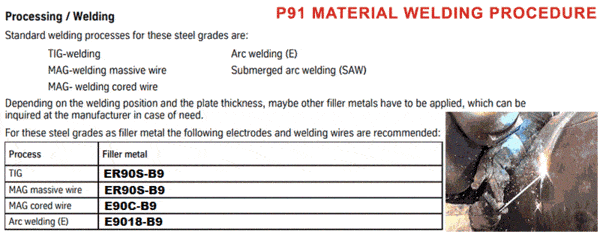
Preheating & interpass for P91/T91 material:
Preheat temperature of a minimum of 200°C shall be applied & maintained during the welding. Always use an electric resistance preheating technique instead of oxyfuel flame to allow uniform preheating.
The same preheat temperature shall be applied for tack welding also. Interpass temperature shall be 600 °F (315 °C) maximum for P91 material welding.
You can use our Online Welding Preheat Calculator to find the right preheat temperature for a variety of materials based on alloy chemistry, plate thickness, and hydrogen level.
Watch our YouTube video to Learn what is Preheat, Inter-pass & post-heating.
Post Weld Heat Treatment:
The Post Weld Heat Treatment temperature for P91 base metal as per ASME Section 8, Division 1 is a minimum of 705°C (given in Table UCS 56-11). For additional conditions based on Nickel and Manganese content, refer to the code.
It should be noted that this ASME Code specifies an upper temperature limit of 1425°F (775°C) for PWHT of Grade 91 material.
If this temperature is exceeded, the effect of the Grade 91 material can change dramatically and must be rigorously evaluated for assurance.
Since most materials, including Cr-Mo steel, the original Grade 91 source, are restored to their original material properties when cooled after exceeding the lower critical temperature, exposure above the upper critical temperature does not have a significant impact.
The worst case scenario of the previous Cr-Mo steels is that it violated the lower critical temperature, so re-validating this WPS will solve it.
Hot bending or Cold bending of P91 Material
Grade 91 materials can be hot bending between 1600 and 2000°F using furnace heating or induction heating. However, temperatures on the lower side of this temperature range are preferred.
The pipe to be hot-bended should be a full-furnace normalizing heat treatment between 1900 and 1950°F at a thickness of 30 minutes per inch.
If the pipe being cold bending has a strain of more than 5%, stress-relieving heat treatment should be performed at the tempering temperature.
If the strain exceeds 20% and the design temperature exceeds 1200°F (540°C), the bending product must be normalized and tempered.
Cold deformation that occurs during cold bending should not exceed 10% Strain on this metal, and if it does, that part should be normalizing and tempering heat treatment.
The Strain formula is % strain = 100 r/R, R is the radius of Bend, and r is the radius of pipe.
Hot-bended pipes must be re-normalized and tempered because hot bending destroys the structure that causes them to have enhanced creep properties of Grade 91.
The cooling rate after hot bending is usually too slow to obtain uniform martensitic microstructure.
